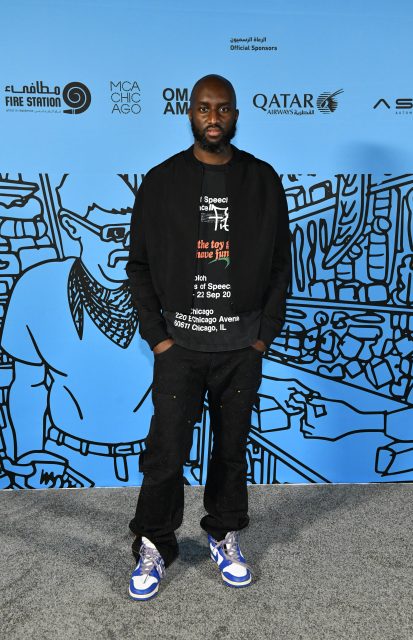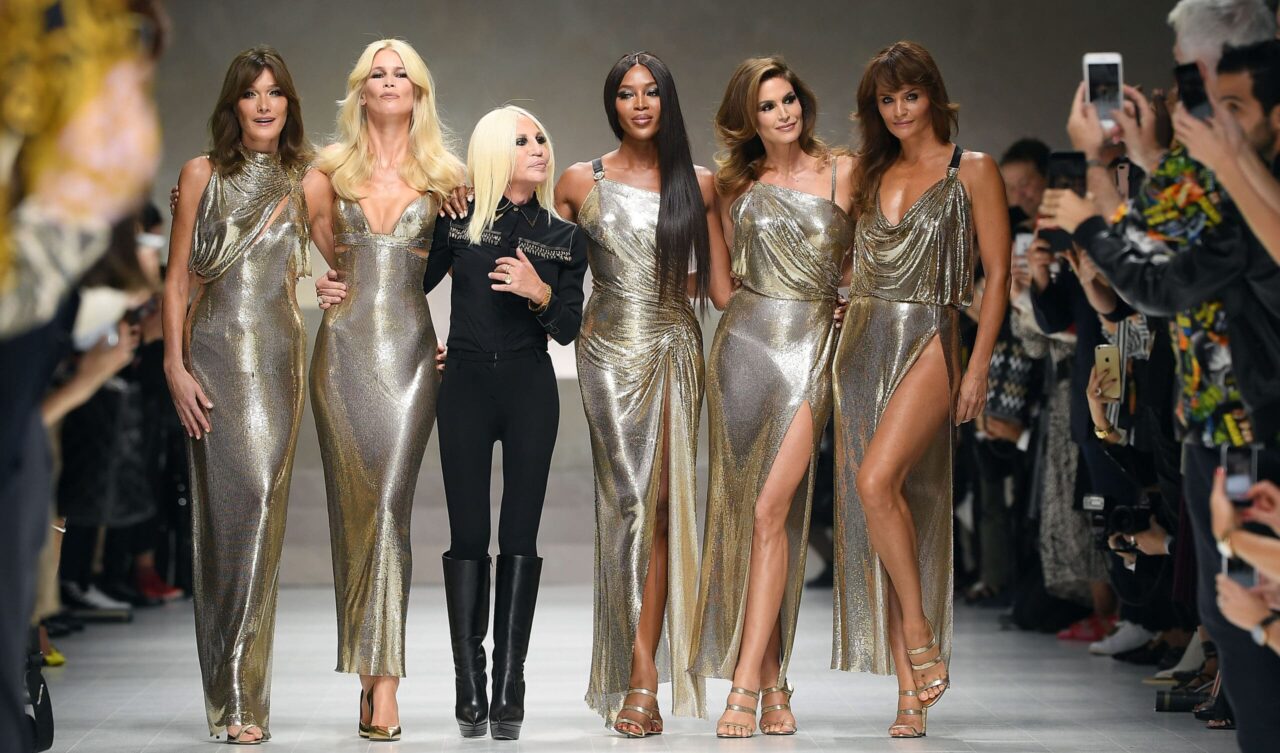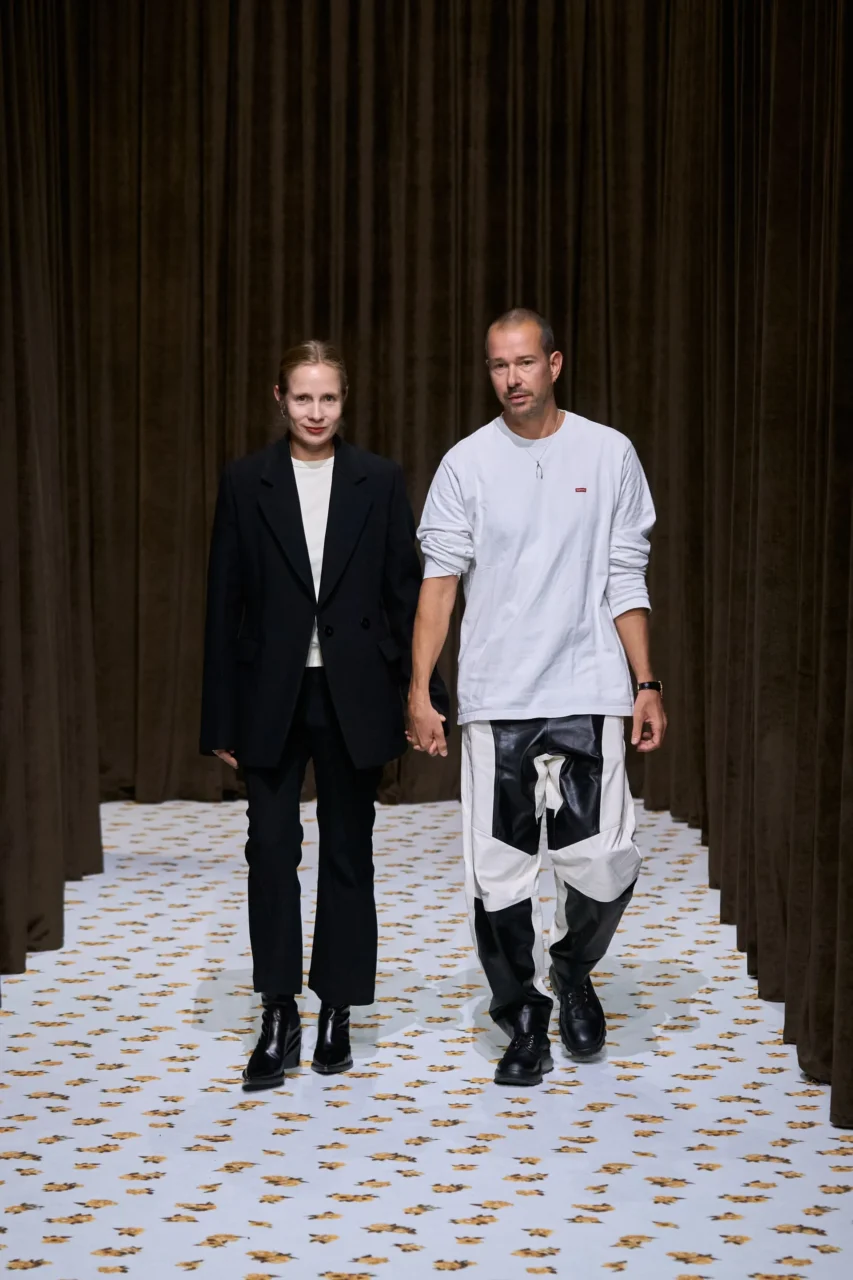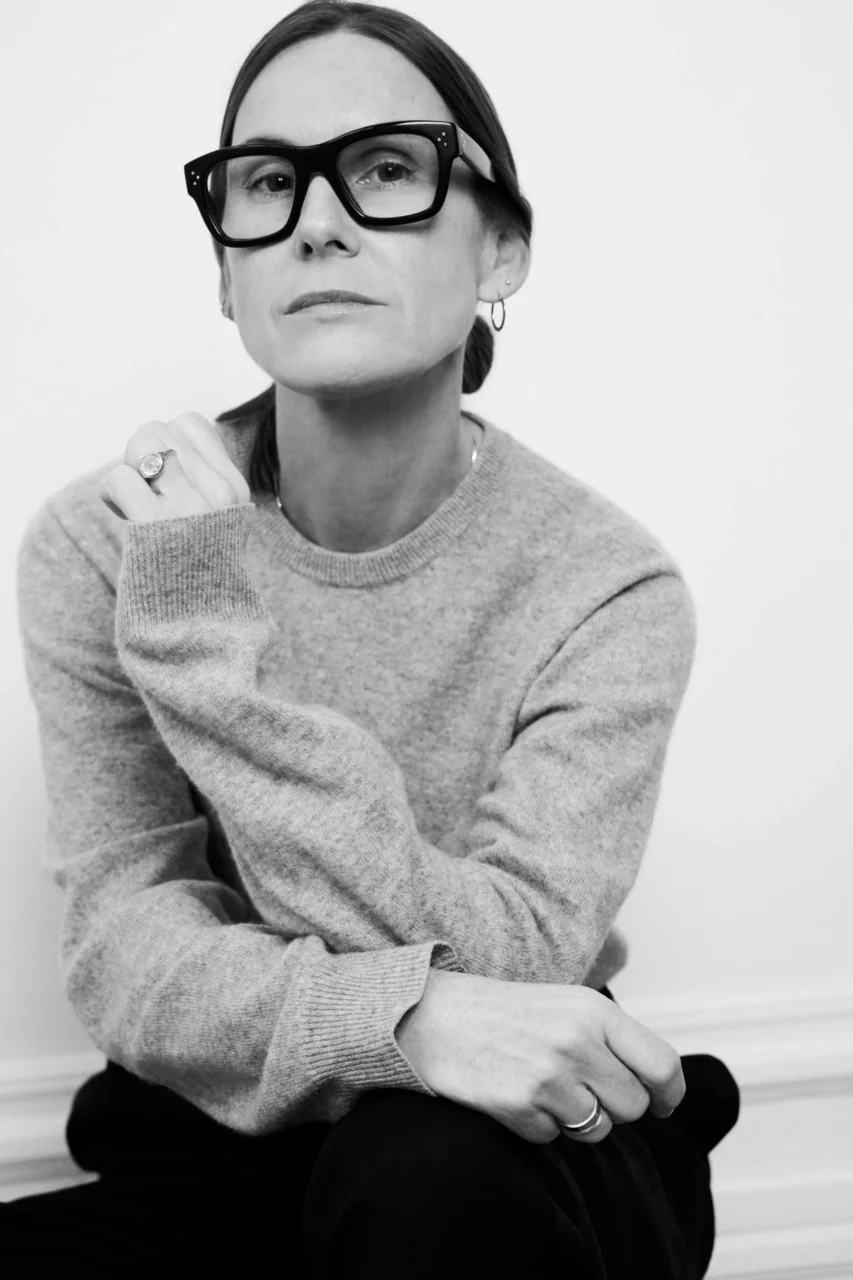“It is easy to see the beginnings of things,” Joan Didion once wrote, “and harder to see the ends.” That author, journalist, style icon, and north star for a certain type of literary young person died today after a prolonged illness. She was 87 years old.
Didion may have been famous since the late 1960s, but hers was the rare sort of celebrity that never dampened her respectability. Not even modeling in fashion advertisements (for Gap, in 1989, and for Celine, in 2015) could shake her status within the literary world, nor affect the particular influence she held for the millions of readers who attempted to ape her style over the years. That meant everything from adopting a working wardrobe of leotards, suede wrap skirts, and long, unassuming silhouettes, to shaping their own habits after what they could glean of hers—whether via her bourbon-filled packing lists, her journal entries, or her surgically precise journalism. And why wouldn’t they? It was Didion, after all, who once wrote of Georgia O’Keeffe: “Style is character.”
Didion studied English literature at the University of California, Berkeley and worked at Vogue from 1956 to 1964, where she was an assistant features editor and wrote such seminal essays as “On Self Respect” (1961) in order to fill some unexpectedly empty pages. “I think we are well-advised to keep on nodding terms with the people we used to be, whether we find them attractive company or not,” she wrote. “Otherwise, they turn up unannounced and surprise us, come hammering on the mind’s door at 4 a.m. of a bad night and demand to know who deserted them, who betrayed them, who is going to make amends. We forget all too soon the things we thought we could never forget. We forget the loves and the betrayals alike, forget what we whispered and what we screamed, forget who we were.”
She came to Vogue “in lieu of going to graduate school,” she wrote in the magazine in 1992, having received the Prix de Paris, an essay contest for college seniors for which first prize was a position at the magazine. This career shift was considered unusual at the time, Didion wrote in 2000, and was “a move treated by most of the faculty members to whom I mentioned it as a temporary aberration, since the appropriate move from the English Department at Berkeley was to graduate school at Berkeley.”
“Vogue was an eccentric and in some ways an exotic education, but there was about it an invigorating strictness,” Didion wrote in 1992. “We did not miss deadlines, we did not make mistakes, we learned fast, or we did not stay, how to put a couple of unwieldy dependent clauses through the typewriter and roll them out transformed into one simple sentence of precisely thirty-nine characters. I did stay… I counted characters during the day and wrote a novel at night, and until I got married and moved to California, it never seriously occurred to me to work anywhere else.” The novel was 1963’s Run River, and the husband was her fellow magazine writer John Gregory Dunne. The marriage, she would later write, was “a very good thing to do but badly timed.” She was afflicted by migraines and was frequently depressed, even wearing dark glasses through the wedding ceremony. The couple adopted a daughter in 1966 and named her Quintana Roo, after the Mexican state on the Yucatán peninsula.
Family life brought its own complications. The first sentence of her first column for Life magazine, in 1969, sent from the Royal Hawaiian in Honolulu, was: “We are here on this island in the middle of the Pacific in lieu of filing for divorce.” This was a period of larger self-doubt, heavily influenced by the chaotic events of 1968—both in the broader and more personal sense. “Everything I was taught seems beside the point,” she wrote in Life. “The point itself seems increasingly obscure.” Dunne, suffering from a protracted case of writer’s block, decamped alone during the summer of 1968 and lived for 18 months off the Strip in Las Vegas among prostitutes, card sharks, and comedians; he published a novel called Vegas: A Memoir of a Dark Season in 1974. “Didion,” the New York Times later reported, “bought him three sets of clean sheets and a wastepaper basket; she did not see the apartment until the day he headed home.” It did not seem to be a major point of contention in the marriage. “They were, in the best sense of the word, enmeshed in each other’s lives,” a friend of the couple told the Los Angeles Times in 2005: “As writers and people, they were one of those rare couples in which both people really appreciated in the other the things they appreciated in themselves.”
In California, “on my own, turned loose in the world,” Didion published Slouching Towards Bethlehem (1968), a collection of her magazine pieces that The New York Times called “a rich display of some of the best prose written today in this country.” Time magazine sent the photographer Julian Wasser to capture her that year, perched on her “Daytona yellow” Corvette, dangling a cigarette. (She told Vogue in 2014 that the now-iconic pose—hair limp, eyes bright, cooly impassive, and that car—must have been a whim of Wasser’s; the photographer told Vogue that it wasn’t, and moreover, that “you don’t tell a woman like that what to do.”) She wrote her second novel, Play It As It Lays, in 1970, and the screenplay for it in 1971. She and Dunne then became in demand as script doctors, and wrote screenplays together, including The Panic in Needle Park, in 1971, and the Barbra Streisand and Kris Kristofferson version of A Star Is Born, in 1976.
In 1972, she was diagnosed with multiple sclerosis, after experiencing periods of blindness in alternate eyes that lasted for up to six weeks at a time. “I had, at this time, a sharp apprehension not of what it was like to be old but of what it was like to open the door to the stranger and find that the stranger did indeed have the knife,” she would write of the diagnosis. “In a few lines of dialogue in a neurologist’s office in Beverly Hills, the improbable had become the probable, the norm: things which happened only to other people could in fact happen to me.” She lived with the disease in remission for most of her life, and told the Los Angeles Times that she never went to get further testing to prove or disprove the diagnosis when such technology became widely available, because “I hadn’t had a symptom since the early ’70s and it didn’t seem worth it to have an MRI to prove something I didn’t want to prove.” (“Mortality seems to be one of those things you confront over and over again without quite getting it,” she added.) In 1979, she published The White Album, another collection of her journalism from Life, Esquire, The New York Times, and the New York Review of Books; Martin Amis called her “the poet of the Great Californian Emptiness” in his (not altogether glowing) review of it for the London Review of Books.
Didion and Dunne reveled in a kind of starry Hollywood domesticity. They threw regular parties, and were admirably modern in the raising of their daughter: Dunne would make breakfast for Quintana and take her to school in the mornings, while Didion would “get up, have a Coca-Cola, and start work.” They appeared in gossip columns along with the likes of Bianca Jagger, Paul Morrissey, and Linda Ronstadt. Throughout it all, Didion became the foremost prose stylist of her day. “She has created, in her books, one of the most devastating and distinctive portraits of modern America to be found in fiction or nonfiction—a portrait of America where ‘disorder was its own point,’” Michiko Kakutani wrote in the New York Times in 1979. “A gifted reporter with an eye for the telling detail—the frayed hem, the shaking hand—she is also a prescient witness, finding in her own experiences parallels of the times. The voice is always precise, the tone unsentimental, the view unabashedly subjective. She takes things personally.” Later in the same article, the Times noted that “Didion’s friends jokingly refer to her as the ‘Kafka of Brentwood Park,’ which amuses her husband no end.” Added Dunne: “Joan’s really a rather cheerful person who drives a bright yellow Corvette. In person, she doesn’t have a dark view of life. She just doesn’t expect a lot from it or from people.”
Eventually, Didion turned her nonfiction away from observational reporting and introspection (the response she’d had from readers was emotionally overwhelming, and “there was no way for me to reach out and help them back,” The New Republic says she once told an interviewer) and toward the expertly-argued analytical essay. She published the critically lauded Salvador (1983), Miami (1987), After Henry (1992), Political Fictions (2001), and Where I Was From, in 2003.
In 1988, she and Dunne moved back to New York, where they remained until Dunne died suddenly of a heart attack in December 2003, right before their 40th anniversary. At the time, their daughter, Quintana, was unconscious in the intensive-care unit at Beth Israel hospital, suffering from pneumonia that had turned into septic shock. Didion delayed Dunne’s funeral for three months until Quintana was well enough to attend. Quintana died a year and a half later, in August 2005, a few months after Didion was awarded a Gold Medal from the American Academy of Arts and Letters. Didion wrote The Year of Magical Thinking about her grief, and won the National Book Award for it. “I wanted to capture the obsessiveness of going over the scene again and again, hoping to somehow change the ending,” she told Vogue. “It was like a fever breaking.”
In 2007, she and Scott Rudin adapted the book for the stage as a one-woman show starring Vanessa Redgrave. Grief became one of the defining aspects of Didion’s public profile, as much a part of her character as that enviable sentence structure, those dark sunglasses, that Corvette. In 2011, Didion published Blue Nights, about aging and the loss of her daughter—a tome that the New York Times described as a work in which she comes to grips with “the dismaying fact that against life’s worst onslaughts nothing avails, not even art; especially not art.” In 2012, Didion received the National Humanities Medal from President Barack Obama. “I’m surprised she hasn’t already gotten this award,” Obama told reporters on the day.
For many, through her writing about love and loss, innocence and deception, nostalgia and memory, Didion invented a way of being in the world: an observer, judiciously above the fray, holding it all at an elegant remove. “There is something tomboyishly beautiful about her, but also flinty and remote, and somewhat unnerving, the way someone who is both detached and wise can be,” Susan Orlean wrote of Didion in a profile for Vogue in 2002, in which Nora Ephron praised her cooking and her sense of humor, and Calvin Trillin her familial, personable warmth. She was both brilliant and driven, and continued to produce incomparable work in spite of her well-cataloged dread, her paralysis, her irritability, and her “neurotic inarticulateness.”
Perhaps her most famous line is: “We tell ourselves stories in order to live.” And what stories! “Many writers write vexed introspection, or detail-oriented reporting, or counterintuitive cultural commentary, or lifestyle journalism. But so far only Didion has done all four in perfect synthesis, a prose that, at its best, can fire on every cylinder and work on multiple fields of the imagination at once,” Nathan Heller wrote for Vogue in 2014 in an essay that praised her talent for composition as “Mozartian.” She seemed, in other words, to be entirely in control of herself, all of the time, even when elegantly explaining every single way that she was utterly beyond reach. (Not everyone was impressed: the film critic Pauline Kael famously seethed in a New Yorker review of one of Didion’s novels that “the ultimate princess fantasy is to be so glamorously sensitive and beautiful that you have to be taken care of…you see the truth, and so you suffer more than ordinary people and can’t function.” But even Kael concedes a few lines later, “Certainly, I admit that Miss Didion can write.”)
Didion kept to herself for the later years of her life, writing rarely and turning down requests for biography projects and documentary films—until her nephew, the actor and director Griffin Dunne, proposed one. He crowd-raised the required funding to shoot it in a matter of weeks. Joan Didion: The Center Will Not Hold was released in October 2017; in it, Didion retained what the New Yorker dubbed the reporter’s “perpetual straddle between empathy and detachment.” Reviews of the project tended to focus on the documentary’s enviable intimacy and its ultimate lack of killer instinct—as a film, it was never as unflinching as its subject. To watch the documentary was to feel that Didion may have been under the lens, but continued to pull the strings behind it, well aware of the power she’d so often held: the person who seems to tell everything and give absolutely nothing away. When Dana Spiotta asked Didion for Vogue what people tend to get wrong about her, she replied: “I am not as fragile as people imagine me to be.” She never was.
Editor
Alessandra CodinhaCredit
Lead image: Irving Penn, Vogue, September 1996











